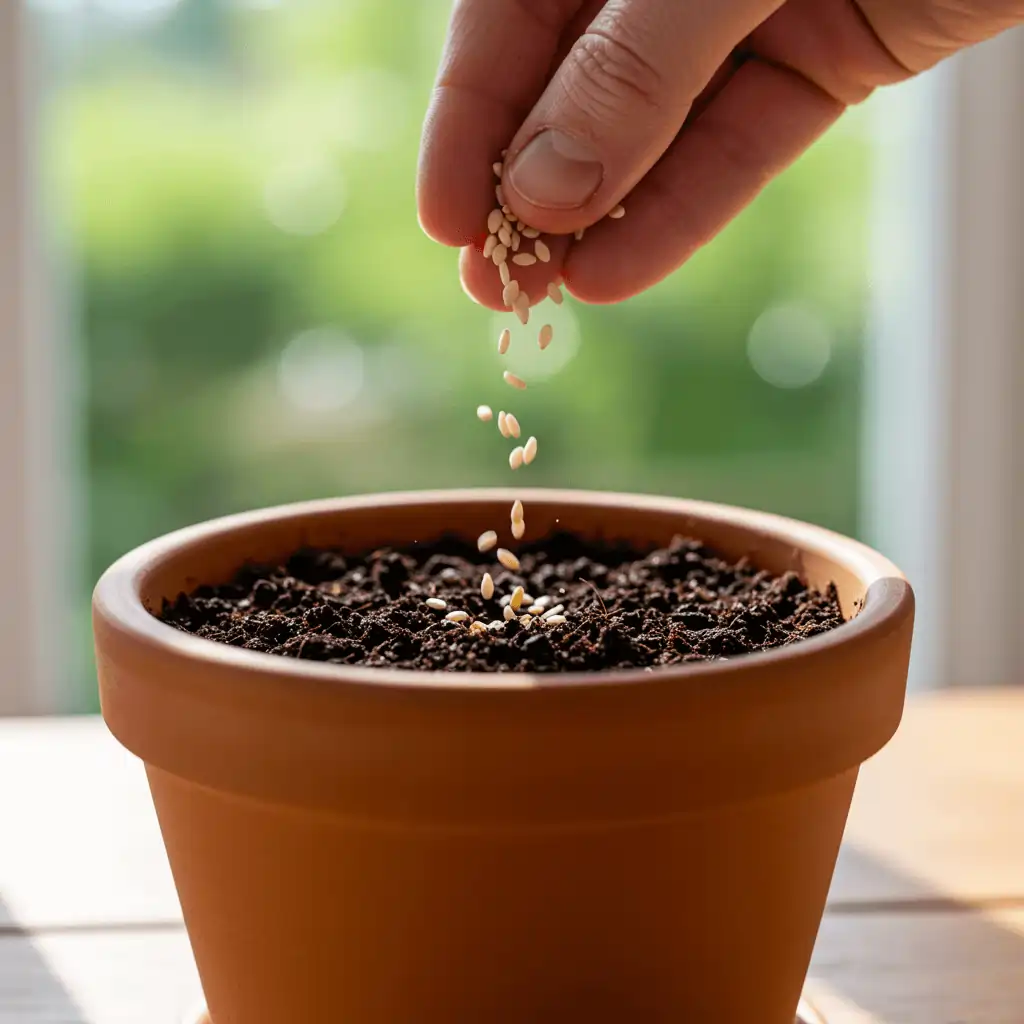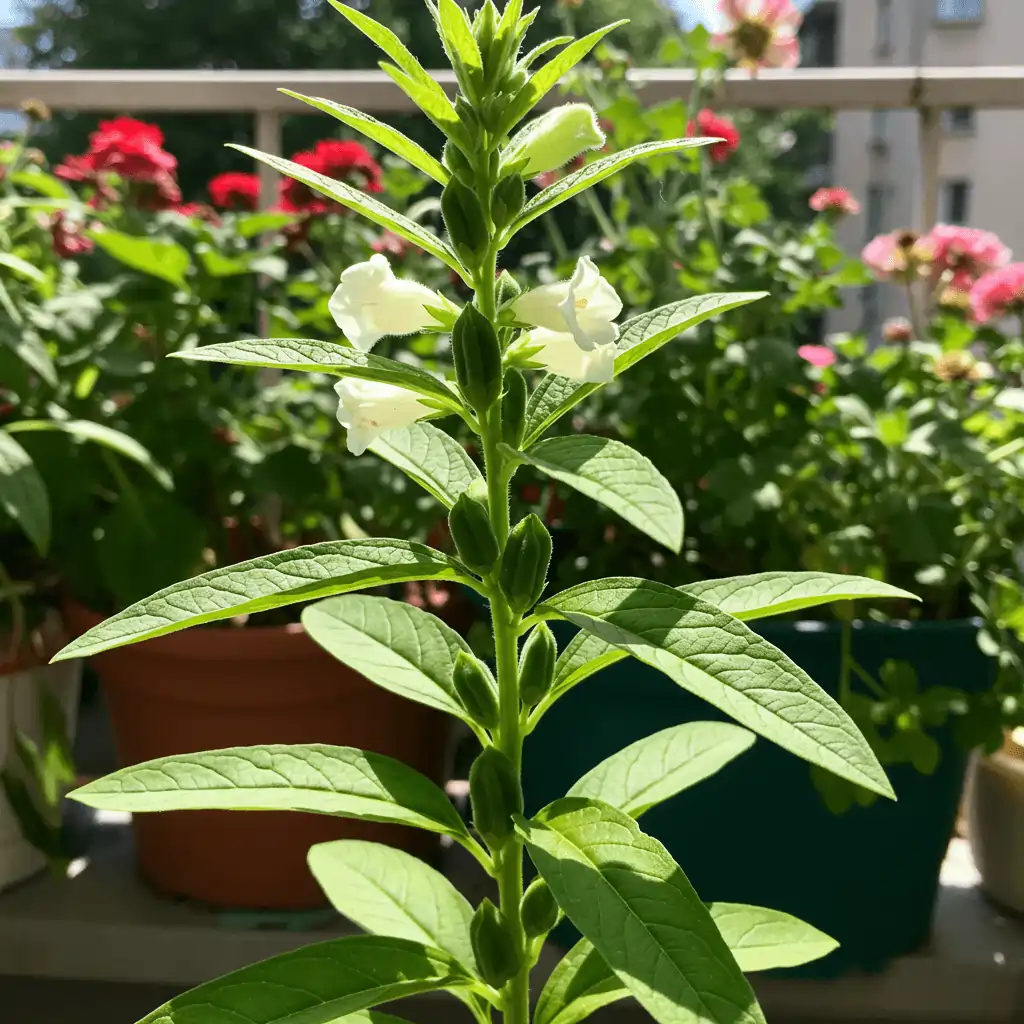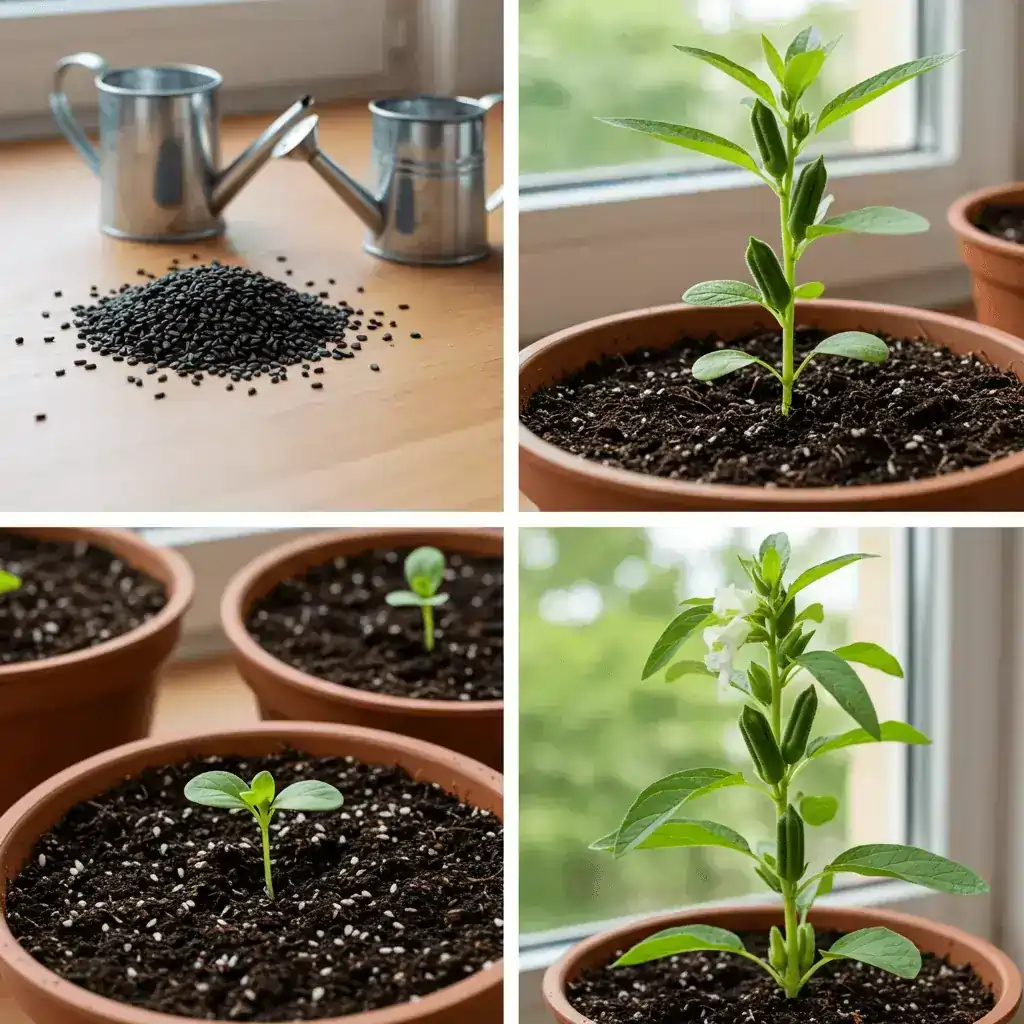How to grow sesame seeds at home? Start with a sesame seed plant, a hardy crop perfect for home gardens. This guide shows you how to plant, care for, and harvest your very own sesame seeds. Whether you’re a beginner or experienced gardener, this easy method ensures success.
Discover why growing a sesame seed plant is rewarding. These tiny seeds pack big nutrition, offering protein and healthy fats. Plus, sesame has a rich history as a global crop, making it a fun addition to your garden. This guide breaks down every step, from choosing the right spot to harvesting.
Follow this tutorial to learn soil prep, planting tips, and maintenance tricks. You’ll understand how to nurture a sesame seed plant from seedling to harvest. Ready to grow a productive, low-maintenance crop? Let’s get started!
Understanding Sesame Seeds and Their Benefits
Sesame seeds come from the sesame plant (Sesamum indicum), a flowering species from Africa and Asia. This plant’s seed pods burst open when ripe, releasing tiny, nutrient-rich seeds. Knowing where sesame seeds come from can make you appreciate their journey from soil to your kitchen.
Nutritional Profile of Sesame Seeds
These tiny seeds are packed with nutrients. Here’s what you get:
- Calcium and iron for bone and blood health
- Magnesium to support nerve and muscle function
- Healthy fats that aid heart health
Just a tablespoon gives you minerals and fiber. They’re a great addition to any diet.
Historical and Cultural Significance
Sesame’s history goes back thousands of years. Ancient texts from Babylon and Egypt talk about its use in oils and foods. In Hindu rituals, sesame seeds bring good luck. In Japanese culture, they’re a key ingredient in goma dishes.
Learning about its origins and uses shows why growing this plant in your garden connects you to traditions and nourishment.
Preparing Your Garden for Sesame Seed Planting
Choosing the right spot is key. Sesame plants do best in sunny locations with well-drained soil. Clear the area of weeds and debris to give seeds room to grow. Loose, fertile soil helps roots grow strong, making harvesting easier later.
- Soil Prep: Till the soil to a depth of 12 inches. Mix in compost or organic matter to improve texture and nutrients.
- Climate Check: Sesame needs warm soil (above 60°F) and full sun. Wait until all frost risks pass before planting.
- Spacing: Sow seeds 1-2 inches apart. Proper spacing ensures plants don’t overcrowd, simplifying harvesting steps.
Patience is important. Let soil rest for a few days after prep to let amendments settle. Avoid compacting the soil near planting areas to keep roots strong. When ready, plant seeds shallow—about ½ inch deep. This setup supports easy growth and future harvesting.
Step-by-Step Guide: How to grow sesame seeds at home

Starting with sesame cultivation means knowing your sesame plant growing zone. This guide will help you through the key steps for a successful harvest.
Selecting the Right Sesame Seed Plant Variety
Pick varieties that fit your sesame plant growing zone. Jem-sun works well in USDA zones 5–9, while Pigeon Pea is best for zones 8–11. Make sure to check the seed packets for the right zone to ensure your plants grow well.
- Jem-sun: Tolerates cooler spring temperatures.
- Pigeon Pea: Best in warmer, drier regions.
- Black Sesame: Prefers moderate humidity.
Soil Testing and Preparation Techniques
Good soil is key for healthy plants. Use a home kit to test your soil’s pH levels. Sesame likes slightly acidic to neutral soil (6.0–7.5). Adjust your sesame plant growing zone’s climate as needed. Add compost or organic matter to help with drainage and keep nutrients.
Planting Methods and Spacing Tips
Plant seeds ½ inch deep, 6–8 inches apart. If your sesame plant growing zone has tight soil, space them wider for better air flow. Water gently after planting to prevent seed movement.
- Prepare rows with 2–3 feet between them for easy access.
- Thin seedlings to 4 inches apart once they reach 3 inches tall.
- Mulch around plants to retain moisture and suppress weeds.
Sesame Plant Care and Maintenance
Proper care for sesame seed plants involves watering, nutrients, and pest control. Start by keeping the soil moist for the first few weeks after sprouting. Once the plants grow, water them deeply once a week. Adjust this based on how much rain they get.
- Watering: Make sure the soil drains well to avoid waterlogging. Wait until the top inch of soil feels dry before watering again.
- Fertilizing: Use a 10-10-10 NPK fertilizer when you plant. Apply it again halfway through the growing season.
- Pest Control: Check the leaves weekly for aphids or spider mites. Use insecticidal soap if you find any.
Use mulch around the plants to keep weeds away and hold moisture. Pull out big weeds by hand to protect the sesame roots. Watch for fungal diseases like damping-off and make sure there’s good air flow between the plants.
“Consistent sesame seed plant care practices boost yield by up to 30%,” reports the University of California Agriculture Extension.
Trim off yellow lower leaves to improve air flow. Stop fertilizing 60 days before you plan to harvest. This helps the seeds mature. Look for seed pods cracking to know they’re ready to harvest. This is when you stop caring for them.
Harvesting and Post-Harvest Tips for Sesame Seeds

Timing is everything when it comes to getting the most from your sesame seeds. Wait until the plant stems turn yellow and the seed pods rattle. This means they’re ready to be picked. If you wait too long, the pods might break, scattering the seeds.
- Use garden shears to cut entire plants at the base once mature.
- Lay plants on a tarp in a dry, shaded area for 1–2 weeks to dry completely.
- Beat dried plants with a stick over a clean surface to release seeds.
When and How are Sesame Seeds Harvested
Don’t pick seeds in the rain or when it’s damp. Wet seeds can rot. After drying, use a sieve to get rid of any leftover plant bits. Store the seeds in containers that let air through, like mesh bags or paper sacks, to keep them dry.
“Proper drying reduces moisture content below 8%, crucial for long-term storage,” advises the USDA Agricultural Handbook.
Post-Harvest Processing and Storage
Sort the seeds by hand to get rid of any broken pods. For storing:
- Keep them in a cool, dark place.
- Use airtight glass jars if it’s really dry.
- Label the containers with the date you picked them.
Unroasted seeds can last up to 6 months. Roasted seeds will keep for 3–4 months. Always check for any signs of pests or spoilage.
Conclusion About How to grow sesame seeds at home
Growing sesame seeds at home is rewarding and practical. It involves several steps, from preparing the soil to harvesting. Choosing the right variety for your climate and testing soil nutrients are key.
Proper spacing and consistent care keep plants healthy. Harvesting at the right time ensures high-quality seeds. This way, you can enjoy the benefits of homegrown sesame.
Homegrown sesame adds a nutritious touch to your cooking. You’ve learned how to manage soil, track plant growth, and process seeds. Even small spaces can produce a lot with care and patience.
Sesame is a great choice for gardeners of all levels. Its rich history and nutritional value make it a great addition to your garden. Start small, adapt to your space, and enjoy the journey. With each season, you’ll get better at growing sesame and enjoy its flavor in your cooking.
FAQ About How to grow sesame seeds at home
What kind of plant do sesame seeds come from?
Sesame seeds come from the sesame seed plant, known as *Sesamum indicum*. This plant loves warm weather and grows fast. It produces small, flat seeds that are great for cooking and are very nutritious.
How are sesame seeds harvested?
Sesame seeds are picked when the pods turn brown and start to open. This happens about 3 to 4 months after planting. You can shake the plants to get the seeds out, or cut them and let them dry first.
What is the optimal sesame plant growing zone?
Sesame plants grow best in USDA zones 9 through 11. These zones have warm weather and long growing seasons. But, they can grow in different places with the right care.
What are some sesame seed plant care tips?
To care for sesame plants, make sure the soil drains well and they get enough sunlight. Also, water them regularly. Watch out for pests and diseases, and use organic fertilizers to help them grow strong.
How long does it take for sesame plants to mature?
It takes about 90 to 120 days for sesame plants to grow up. This time lets them develop strong roots and healthy seed pods.
Can I grow sesame seeds indoors?
Growing sesame seeds indoors is possible but hard because they need warm weather and lots of sunlight. If you have a bright spot, you can try growing them in pots. But, growing them outside usually works better.
What should I do if my sesame plants are not flowering?
If your sesame plants aren’t flowering, it might be because they don’t get enough sunlight, the soil is bad, or the water is uneven. Make sure they get at least six hours of sunlight a day. Keep the soil moist but not too wet. Adding organic stuff to the soil can also help.

